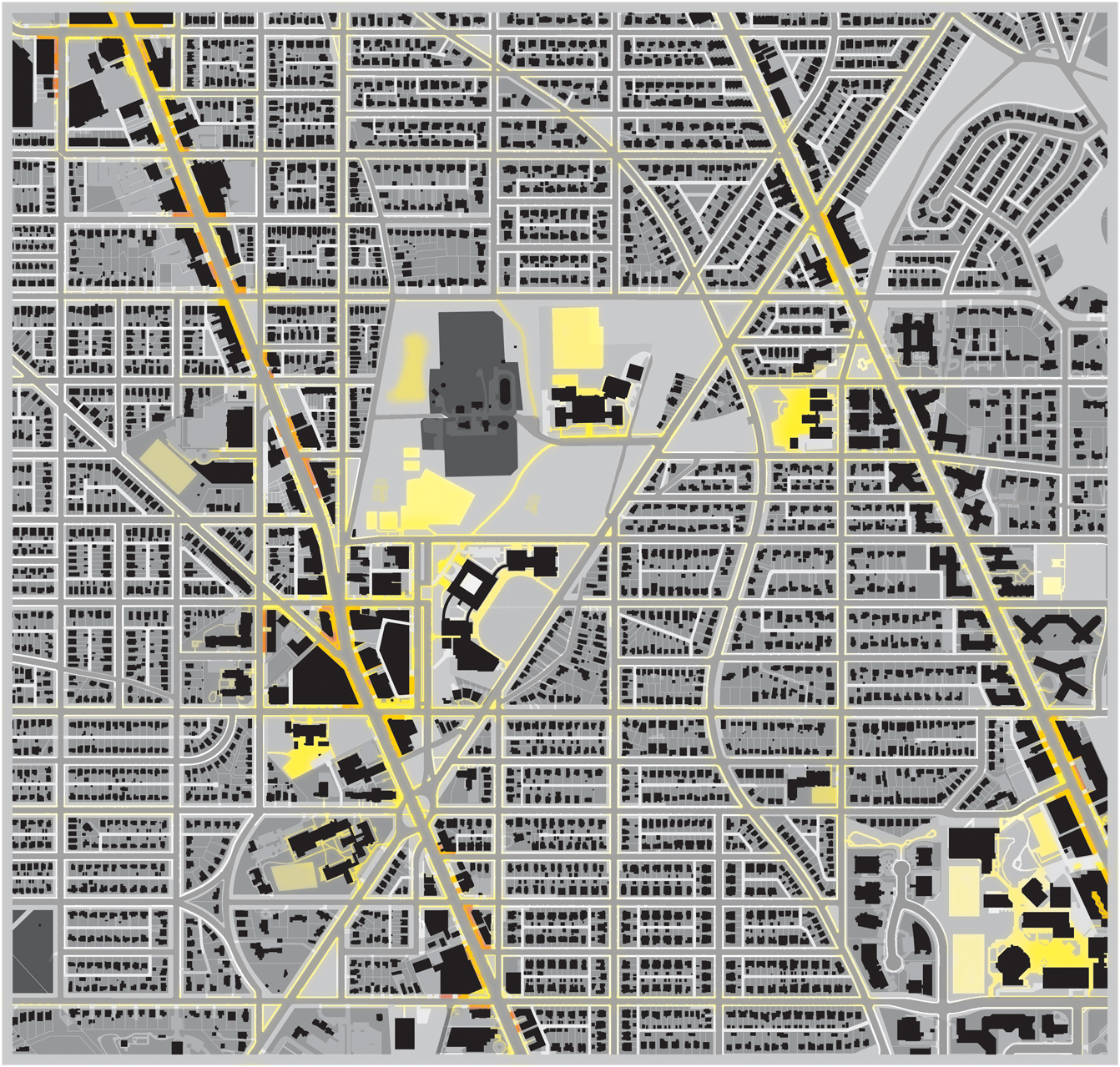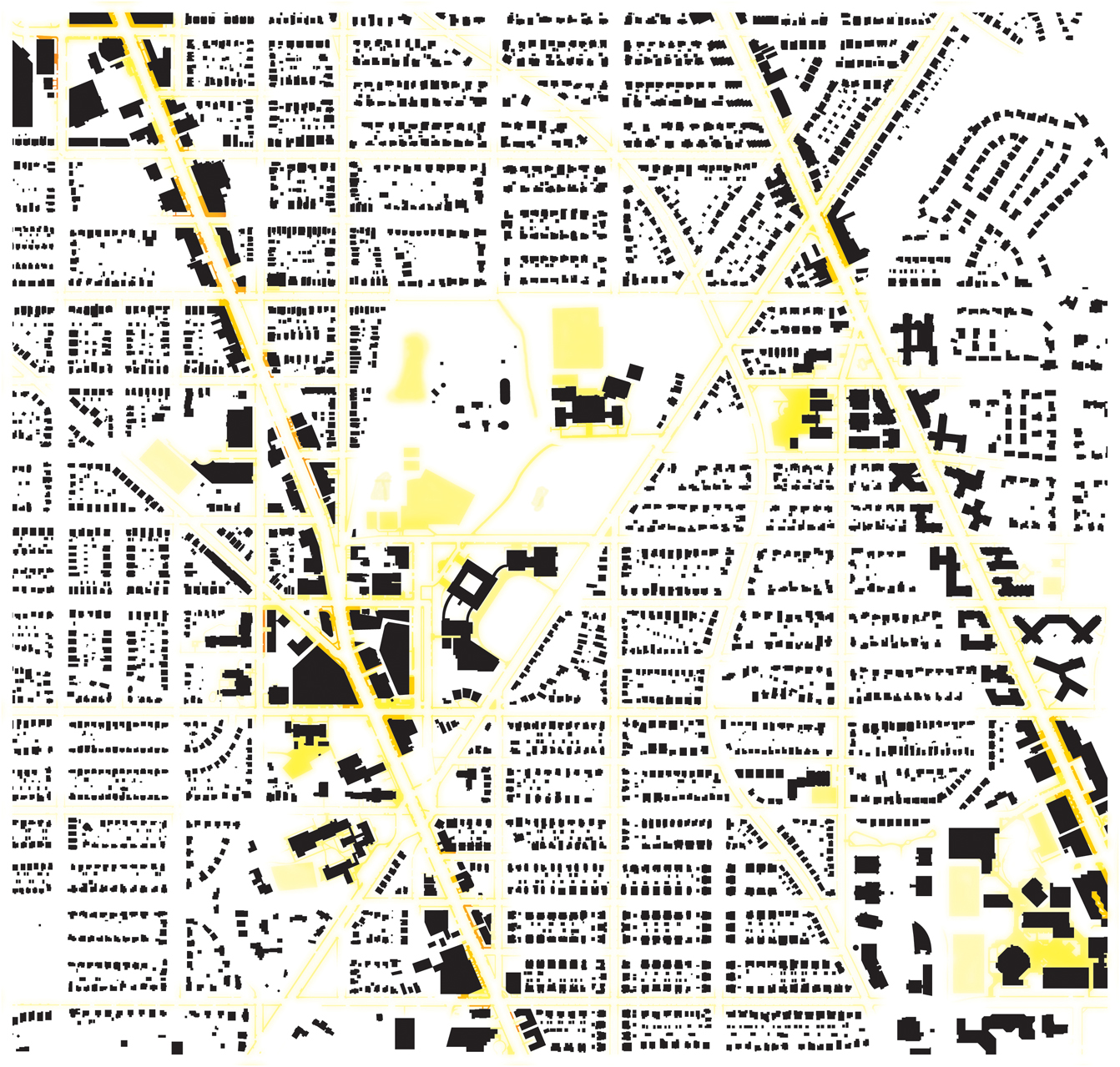Okay, so I mentioned in the last post that neighborhoods, as conventionally defined, are not necessarily the best ways of measuring human activity, and so is the difficult concept of community. However I attempt to define such a thing, it’s going to be imprecise, subjective, and doubtful. But most people can recognize community when they see it. Likewise, when you look a good space, you can tell because of the people there.
Last year, when I was but beginning my job as an apparatchik of the цarьchitect, I quoted Freddy N. in On The Geneology of Morals:
Only owing to the seduction of language (and the fundamental errors of reason petrified within it) which conceives all effects as conditioned by something that causes effects, by a “subject,” can it appear otherwise. For just as the popular mind separates the lighting from its flash and takes the latter for an action, for the operation of a subject called lightning, so popular morality also separates strength from expressions of strength, as if there were an neutral substratum behind the strong man, which was free to express strength or not to do so. But there is no such substratum, there is no being behind doing, effecting, becoming; “the doer” is merely the fiction added to the deed – the deed is everything.
Now, replace “strength” with “community.” Community is, in essence, an act. It is not merely your sheer propinquity to another human meatbag, nor crude ethnic similarities, it is the action to do like others, to help the person nearby, to talk to them, to smile at the man on the street when he says hello. Community, is an cooperative action between people, in the conscious and subconscious, of coming together and working for each other’s values. Why one might associate with one another, and care for them is a wholly different question. But it is relatively easy to see evidence of community, just as it is possible to see evidence of social activity.
Planners have recently focused on creating a “sense of place” in the minds of each individual user. This aspiration is misguided, to some degree caused by a fear that they cannot create genuine place. Whatever the worry, place is, curiously, easier to measure than sense of place. One can simply look at the number of people lingering and returning to one location as a measure of its significance in an area. Sense of place also credits aesthetics with too much of its success, rather than the many other effects Whether the architecture is the driving force in the experience of visitors, or whether it is concentration of people, or the cultural similarities that brings individuals, their presence in a particular place indicates its that location’s value to many individuals. From there, you can begin discussing subjective meaning.
So before I start assigning names to areas, it’s important to see if the plan shows evidence of place, that is, the doing of desire. Let’s call this “locality” for short – it is the evidence of place, a sign that some area is desirable for any number of reasons. This can show that even with no great images, no memories, even a dinky place like Tenleytown has life. So I wandered around the streets of Tenleytown and Tobago casually for a year, and this is what I have found:
Where people were walking around, acting, and interacting in public, I’ve highlighted the space they filled. I think that anyone in from northwest recognizes these patterns of locality – they are basically where people make community. The schools, Tenleytown, the area around Comet and Politics and Prose that I call Tobago, UDC, Van Ness, these are places – we can say that much.
Just for the sake of the December Purchasing Period, take a look at the map of street retail. I’ve overlaid it onto the map above, but you can clearly see the correlation between street-addressing commercial spaces and street activity.
But you can see that there are sections that do no overlap as well. Residential spaces matter too, Unfortunately, there are no truly public places in the study area. It’s all social, commercial, or residential. That’s fine, but it’s something worth adding.
So, with this sense of where people go, the locality, I can begin to elaborate on place. Unfortunately, it’s nowhere near a map of community – but it may show where it happens.


